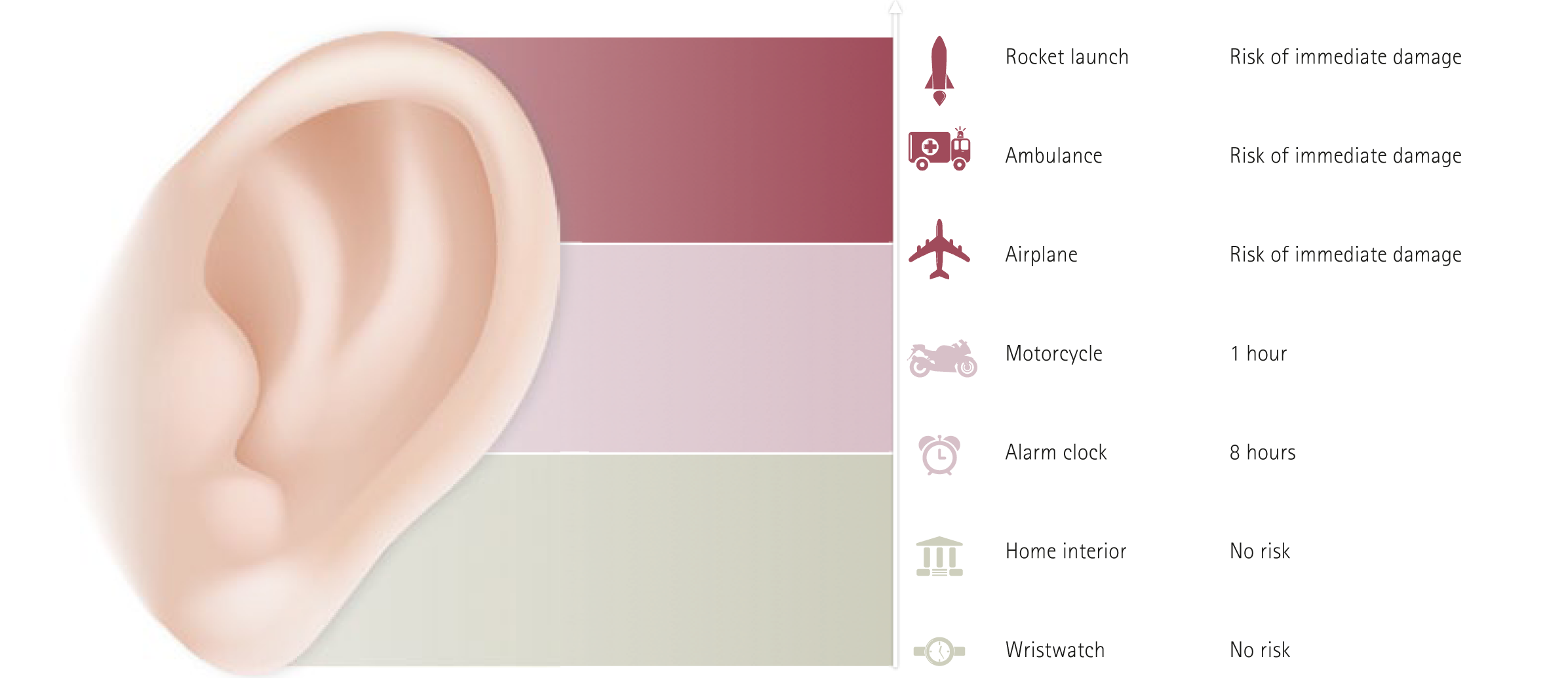
Levels of sound (in dB HL)
The level of damage to your hearing from exposure to noise is based on:
- Decibel level: How loud is the sound?
- Distance: What is your proximity to the sound’s source?
- Time: How long have you been exposed to the particular sound?
Decibel Level
Hearing damage from sound depends on the decibel level, or how loud the sound is. Damage to your ears is based on how loud the sound you’re exposed to is, and duration of exposure. Damage can occur rather quickly if the decibels are over 85, so it’s important to pay attention to what constitutes as “loud”.
Research suggests that those who are exposed to a level of noise that goes beyond 85 decibels are at a greater risk of suffering from hearing loss. For some industries, employees are instructed to wear hearing protection like earplugs or earmuffs while they are on the job as they usually fall under this category of noise levels.
Children have to be particularly careful, as most of the devices used today have noise levels that are higher than 85 decibels. Manufacturers aren’t mandated to put a limit on the maximum sound output of music devices. The benefit is that the majority of these devices have volume limiting settings, so you can easily set the maximum volume to a level deemed safe.
Distance
A sound gets louder as you move closer to the source and softer as you move away from it. If you are far away from the sound, the risk of damage to your hearing is much lower. At concerts, for instance, sitting away from the speakers will reduce your risk.
Time
Exposure to noise affects hearing over a lifetime. If you regularly expose yourself to loud sounds, over time, the risk of permanent damage to your ears will increase. Even one loud event that is lengthy in duration can lead to hearing damage. Always do your best to limit your exposure to any sounds above 100 decibels to 15 minutes at the most, and any sounds that are 110 decibels or higher should only last 1 minute maximum.
The following table gives examples of how loud different sounds are. Loud levels of noise can cause temporary or permanent damage to hearing. It is therefore important to wear ear protection when exposed to loud sounds, especially over a longer period of time.
How loud is too loud?

